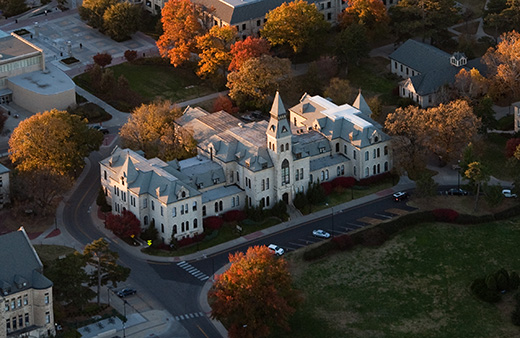Carnegie Classification recognizes university's research activity, undergraduate enrollment
Monday, Feb. 1, 2016

Kansas State University has received the "highest research activity" classification from the Carnegie Classification of Institutions of Higher Education. | Download this photo.
MANHATTAN — Kansas State University has the "highest research activity" and high undergraduate enrollment, according to the 2015 update to the Carnegie Classification of Institutions of Higher Education.
The university moved up from the "very high research activity" classification in 2010 to the "highest research activity" in 2015. The university also received the high undergraduate enrollment profile classification.
The Carnegie Classification is issued every five years to recognize and describe institutional diversity in U.S. higher education. The 2015 classification uses 2013-2014 data from the National Center for Education Statistics, the National Center for Science and Engineering Statistics, and The College Board.
"K-State has had a rich history of research coupled with our land-grant mission, and we've made a conscious effort to build off our strengths in animal health and global food systems to enable impactful technologies, address real-world problems and enhance well-being," said Peter Dorhout, interim vice president for research.
Research activity is a key piece of the university's plan to be a Top 50 public research university by 2025, Dorhout said, and he noted that research expenditures grew 22 percent from 2009 to 2014.
The university has worked toward multiple recent research accomplishments.
• The university has received four highly competitive grants totaling more than $100 million from the U.S. Agency for International Development, or USAID, for Feed the Future Innovation Labs for sorghum and millet, applied wheat genomics, postharvest loss and sustainable intensification. The labs are global collaborations among universities, industry and nongovernmental organizations with the aim of feeding the world's growing population.
• The university is a vital member of the globally recognized Animal Health Corridor. Collaborations in the 300-mile stretch between Manhattan, Kansas, and Columbia, Missouri, have led to development of a vaccine to protect poultry from multiple strains of avian influenza, research and policy leadership in the area of antimicrobial resistance, and development of pigs resistant to a devastating disease that has cost the U.S. pork industry more than $10 billion since the late 1980s.
• The university continues building industry partnerships and has made more than 25 master agreements with industry and government sponsors to streamline projects. Researchers are engaging industry through inventive events, such as a Petfood Innovation Workshop that drew more than 200 attendees.
"Part of our strategic plan has been to engage graduate and undergraduate students in the research enterprise so their learning is comprehensive and they are prepared to succeed in their careers and make a difference in the world," Dorhout said.
The 2015 Carnegie Classification update contains six classifications: basic, undergraduate and graduate instructional program, enrollment profile and undergraduate profile, and size and setting. For more information on Kansas State University's classification, visit carnegieclassifications.iu.edu.
